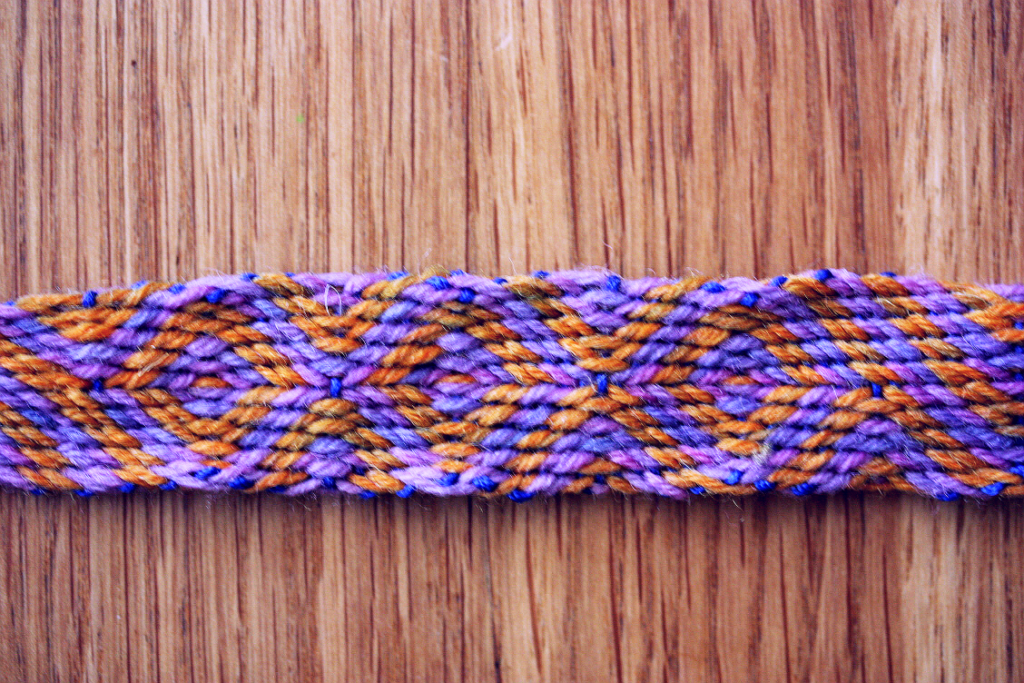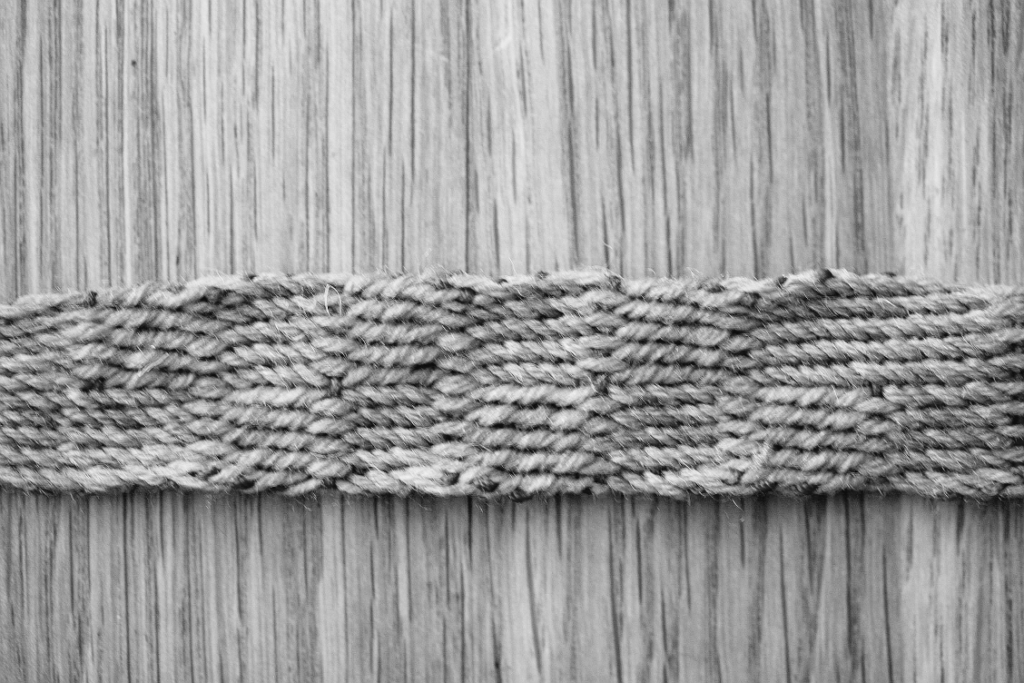Silvia very correctly points out in the comments that she knows of no tablet-woven bands that appear in just one colour, but have a twist direction turn pattern that points to an original patterning. This is true - I don't know of any either (though my overview is not as good, or current, as Silvia's).
Knowing a little bit about how many textile finds are not published, and how decisions are made on what to publish with the very limited time and resources available... my suspicion is that at least a few bands exist that lie somewhere in an archive or a freezer, which would carry a hint of original patterning in form of twist direction changes. Or none at all, if the pattern was formed while only turning the tablets in one direction. They are, however, too unspectacular to be looked at in detail, or published. The same is probably true for bands that still do have a visible (maybe just faintly visible) simple pattern. Since tablet-woven patterns come out best when contrast is high, the chance of the pattern staying visible even in discoloured bands is relatively high.
So - I am not trying to say that there are lots of simple bands published who originally had a colour pattern, which has disappeared now. I'm trying to point out that there is a possibility of simple patterned bands discolouring in a way that would make it harder or impossible to see what the original pattern was. How likely that is, exactly, and how many of these might be in archives or storage boxes, is another very interesting question, but unfortunately not one I'm able to answer. I just think it's something worth to be aware of.
End of addition.
A while ago, I botched when setting up a warp for a tablet weaving demo band - I took two colours I liked, held the balls of yarn next to each other, went "yeah, that looks good", and warped the band in a setup for diagonals or twill.
Just to find, a few wefts in, that the contrast wasn't as good as I had thought it to be. A quick check, and yes - the grey value of the two colours is identical. So while the pattern is visible in normal lighting, the contrast isn't high enough to use this as a demo band for showing how to weave twill.
It is, however, perfect to show something else: What can happen to a tablet-woven band when it's buried in the soil for a few hundred years and turns all brown all over. Because then, all you might be able to see is that there must have been a pattern of some kind.
Case in point?
Let's take one of the most simple patterns you can weave with a diagonals setup: diamonds. It looks like this on my band:

Now let's put it into virtual soil to turn all brown - or, in this case, convert the picture to greyscale.

You can see the turning points across the whole band, coming in at more or less regular intervals - so you can assume that some pattern must have been happening here. You won't be able to tell which one, though.
Let's spice it up a bit. Imagine you're the archaeologist and find this:
[caption id="attachment_5317" align="alignnone" width="640"]
 Click on this link to find out.
Click on this link to find out.Are you able to guess what it looks like in colour? Click on the link to find out.
So there we are. A band like this would probably not get published prominently - and I think that we might have found many more simple patterned bands in the Middle Ages than our finds show today. No metal (as in the brocaded bands) will mean worse chances at surviving in the soil, and small bits and pieces of uniformly coloured bands will give scant hints at the patterns that might once have been visible...